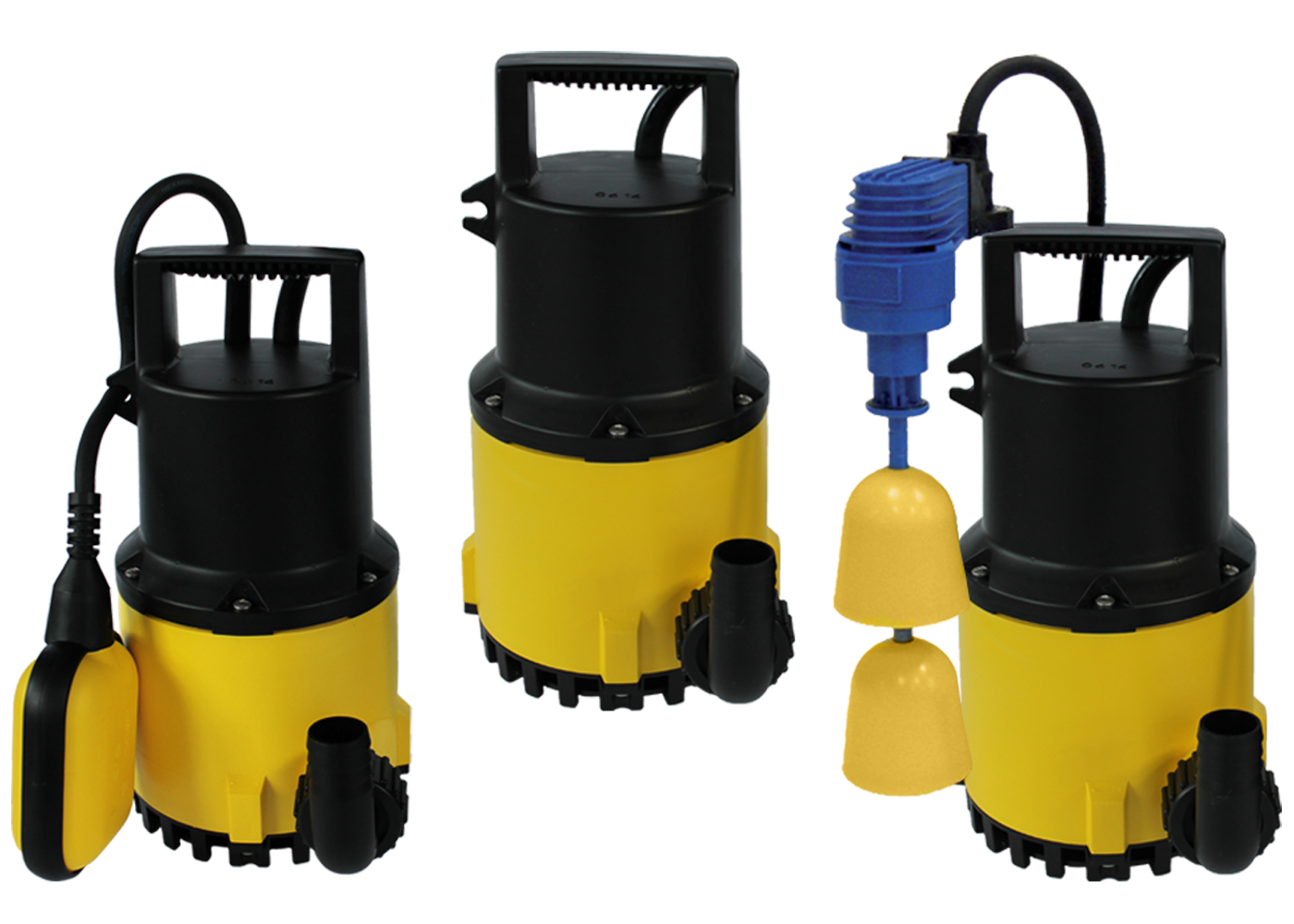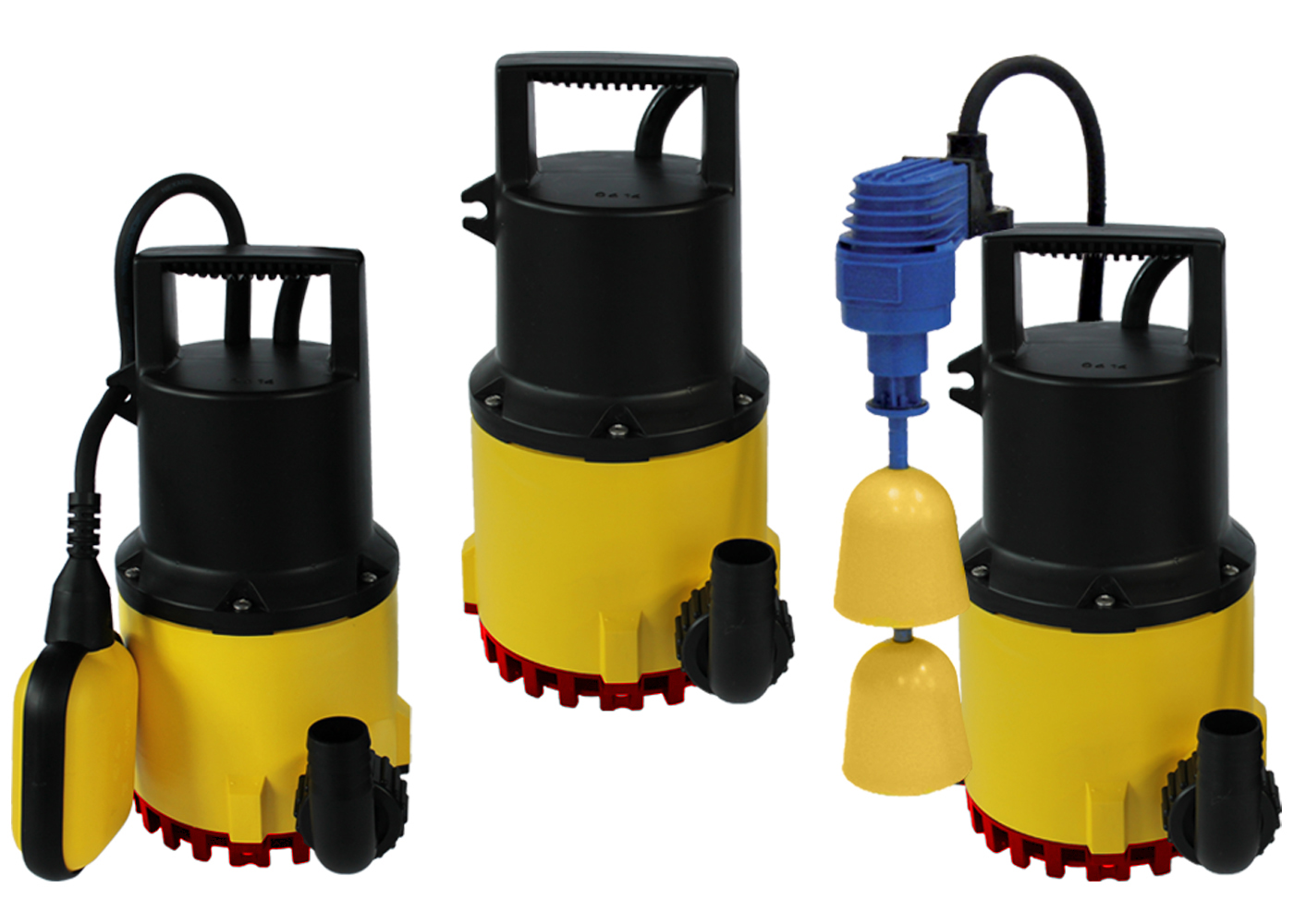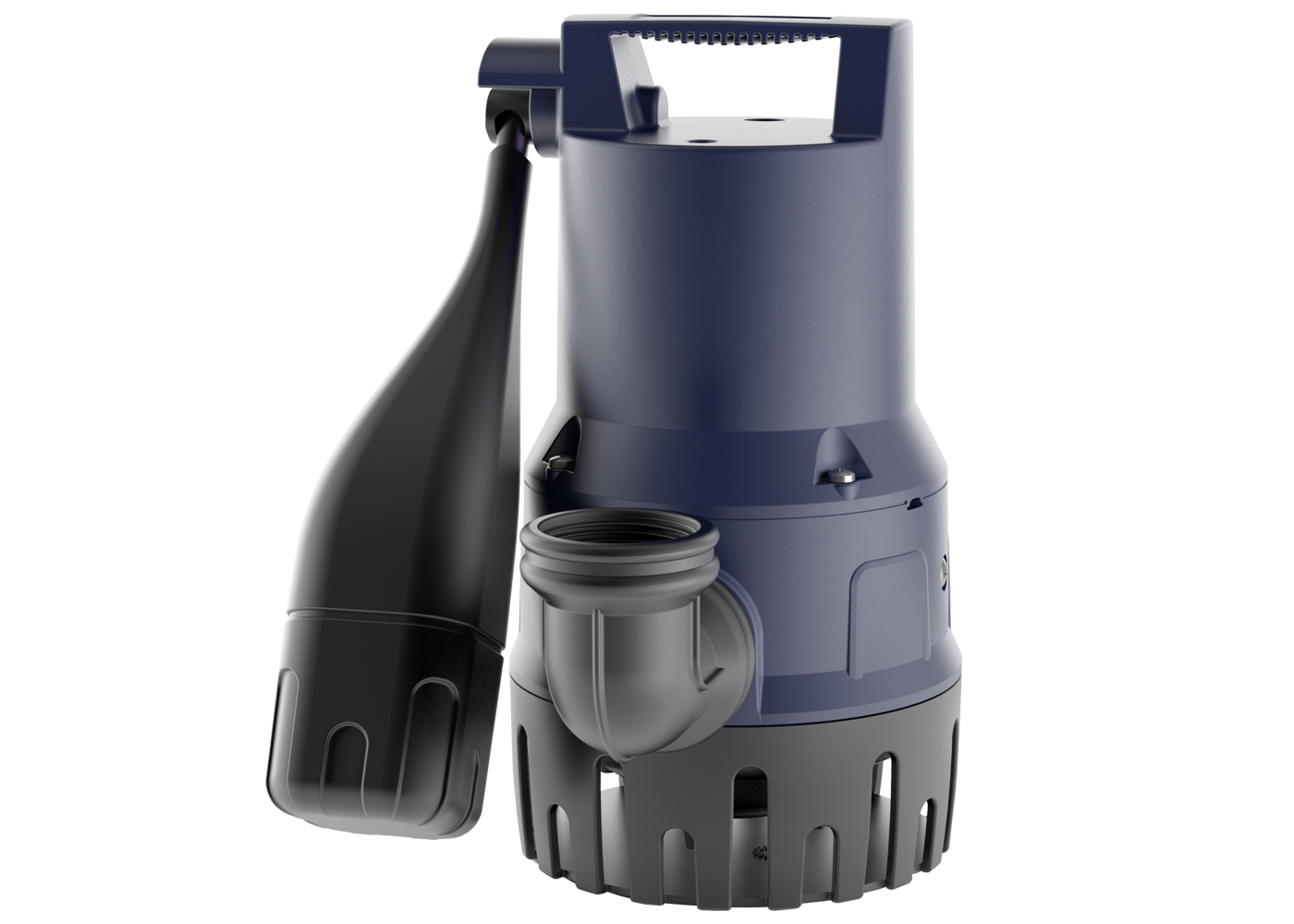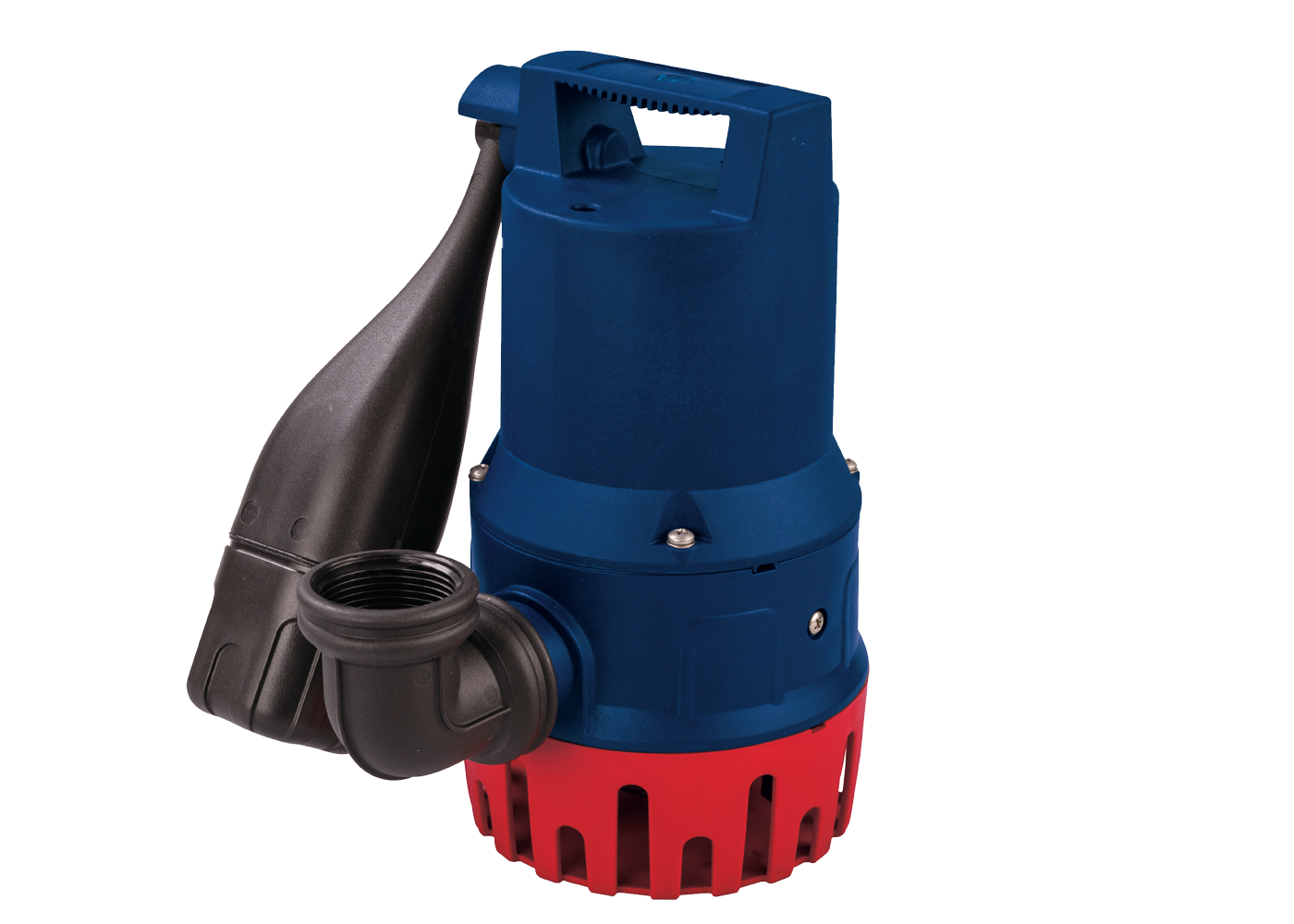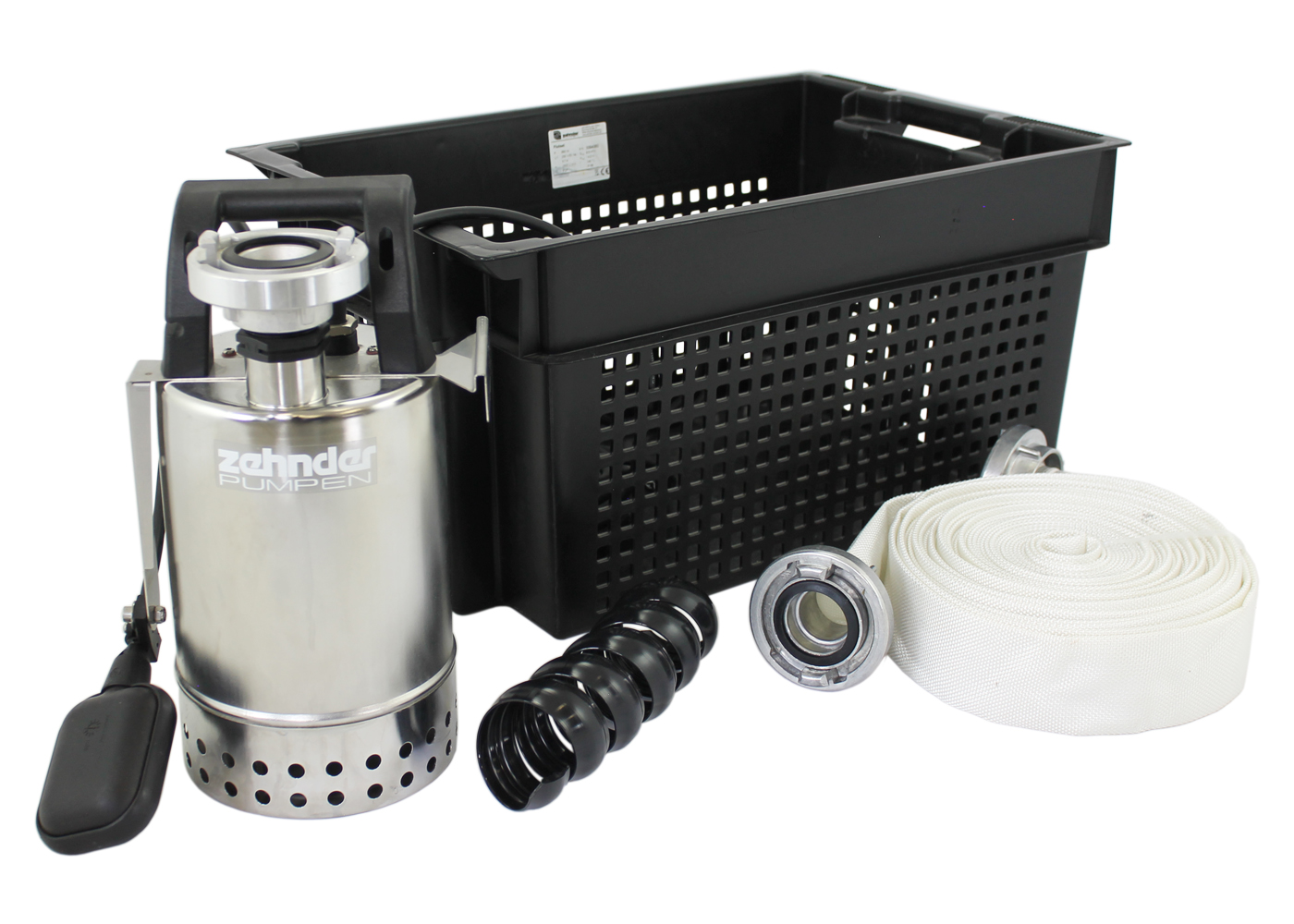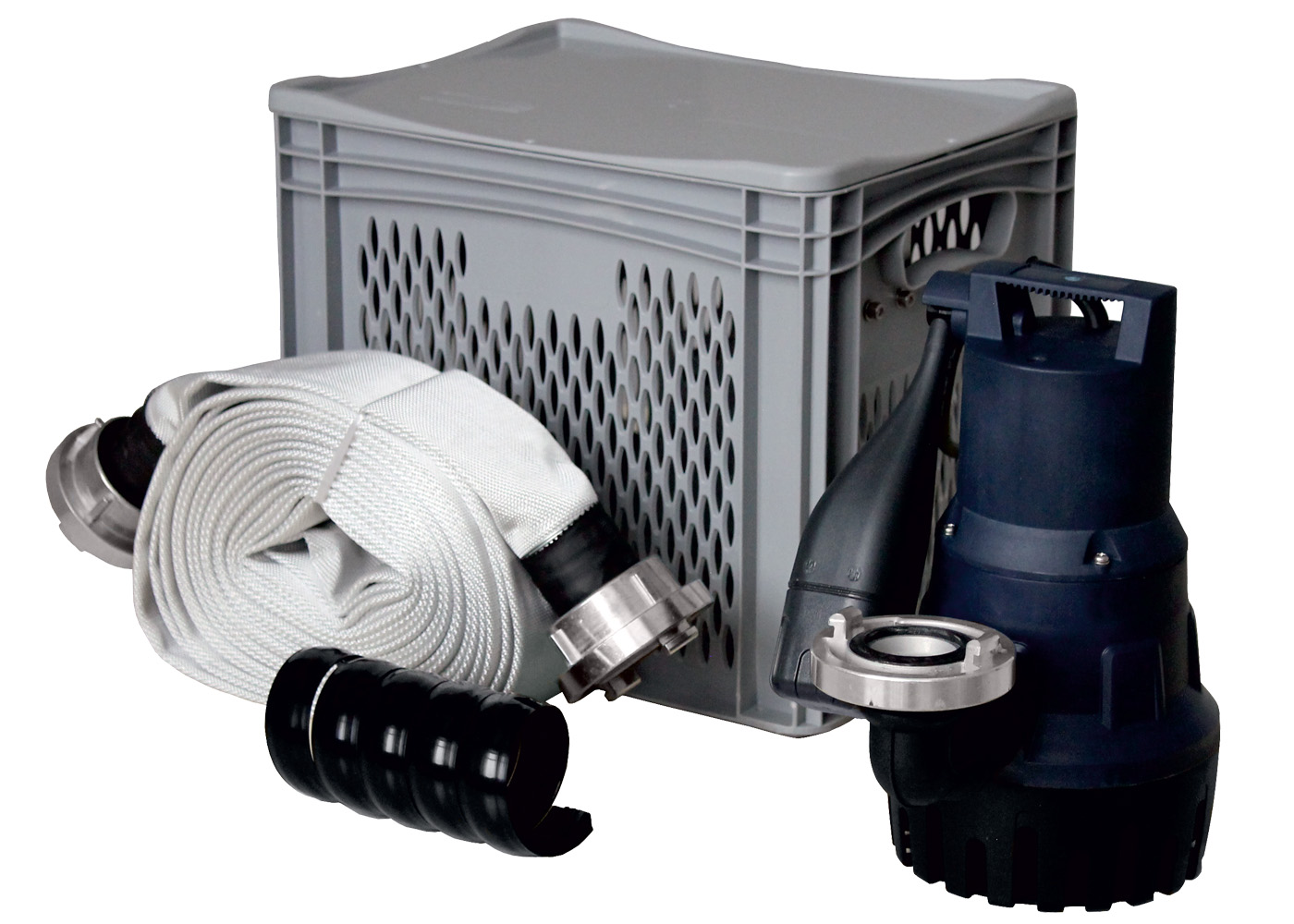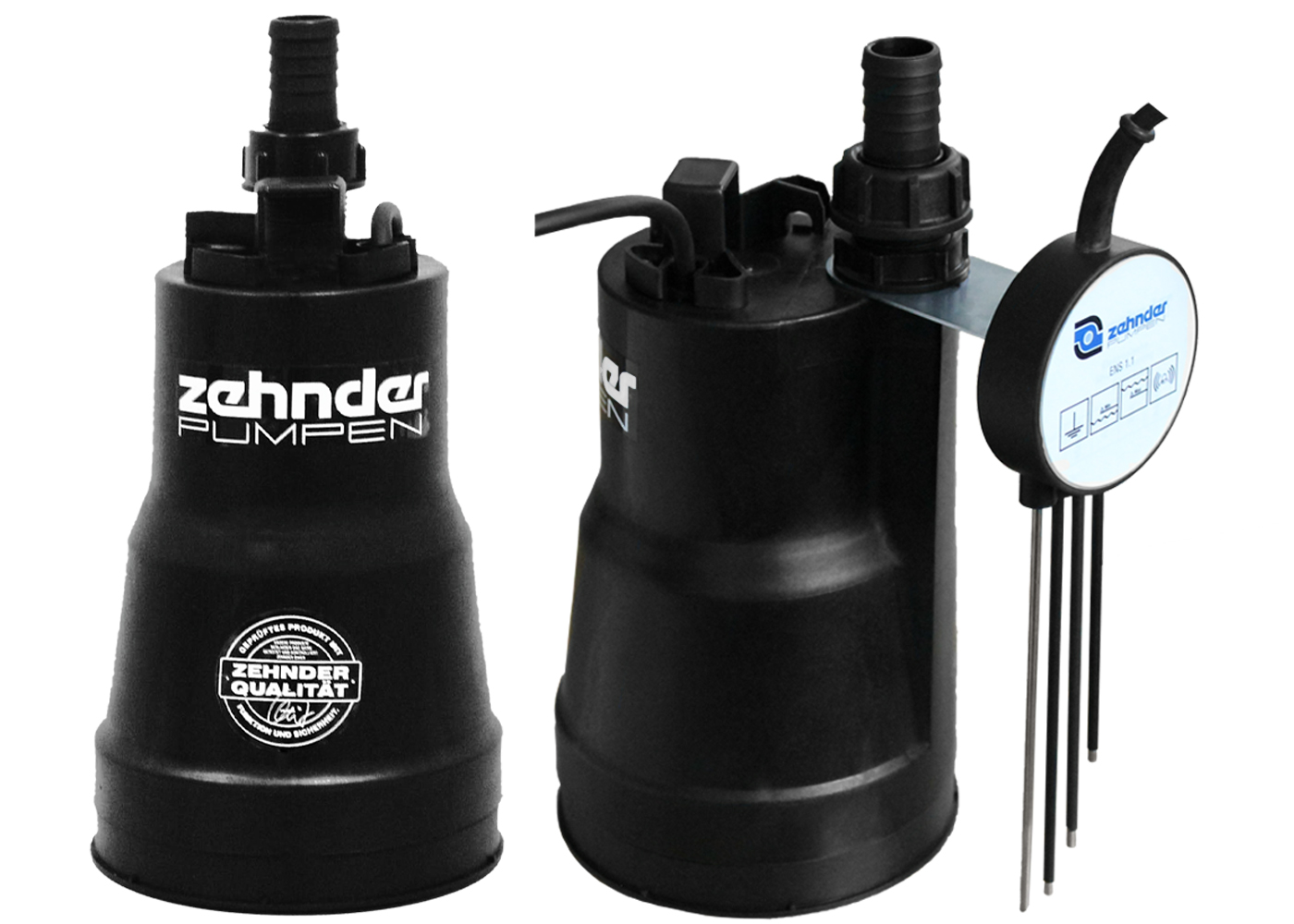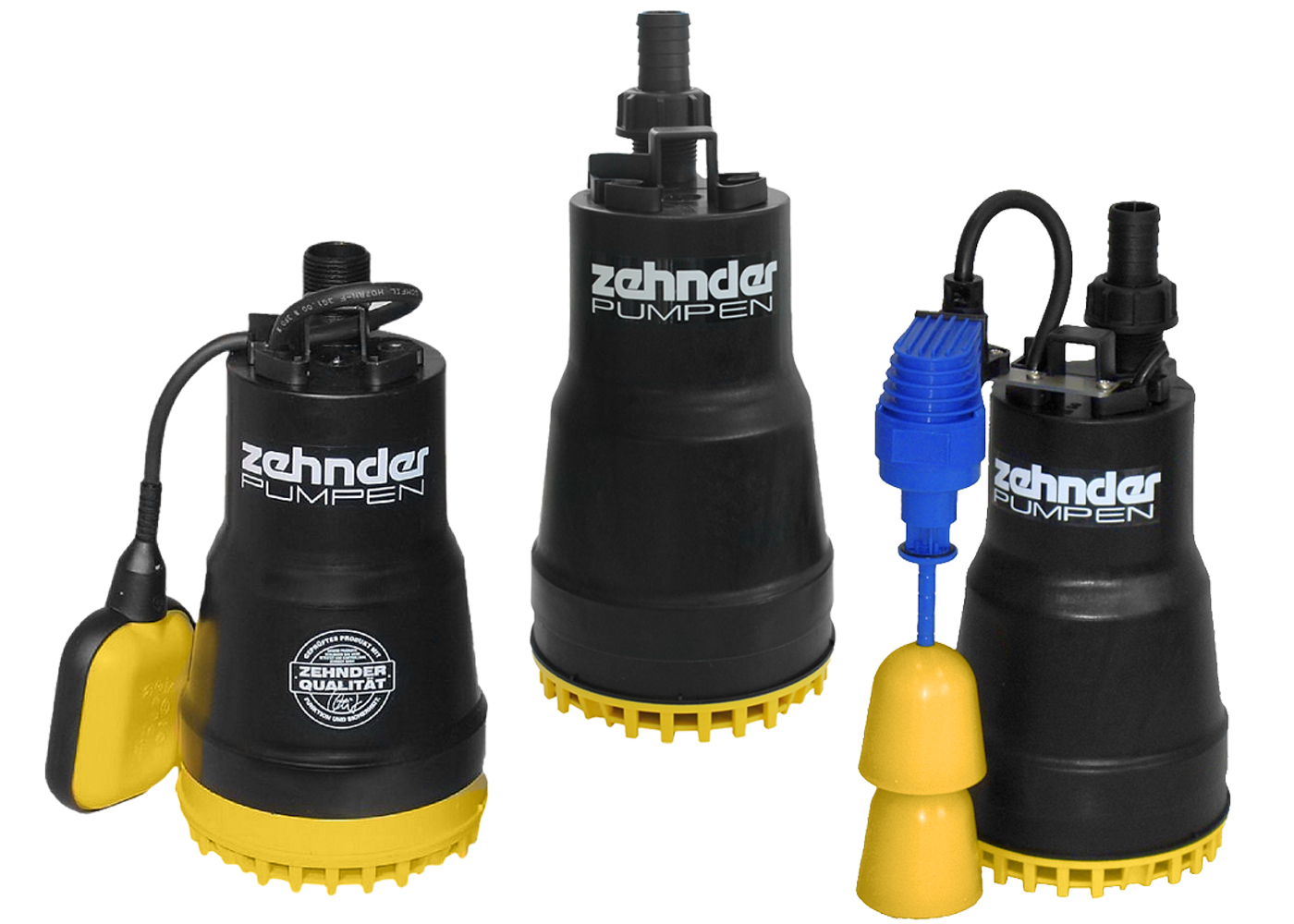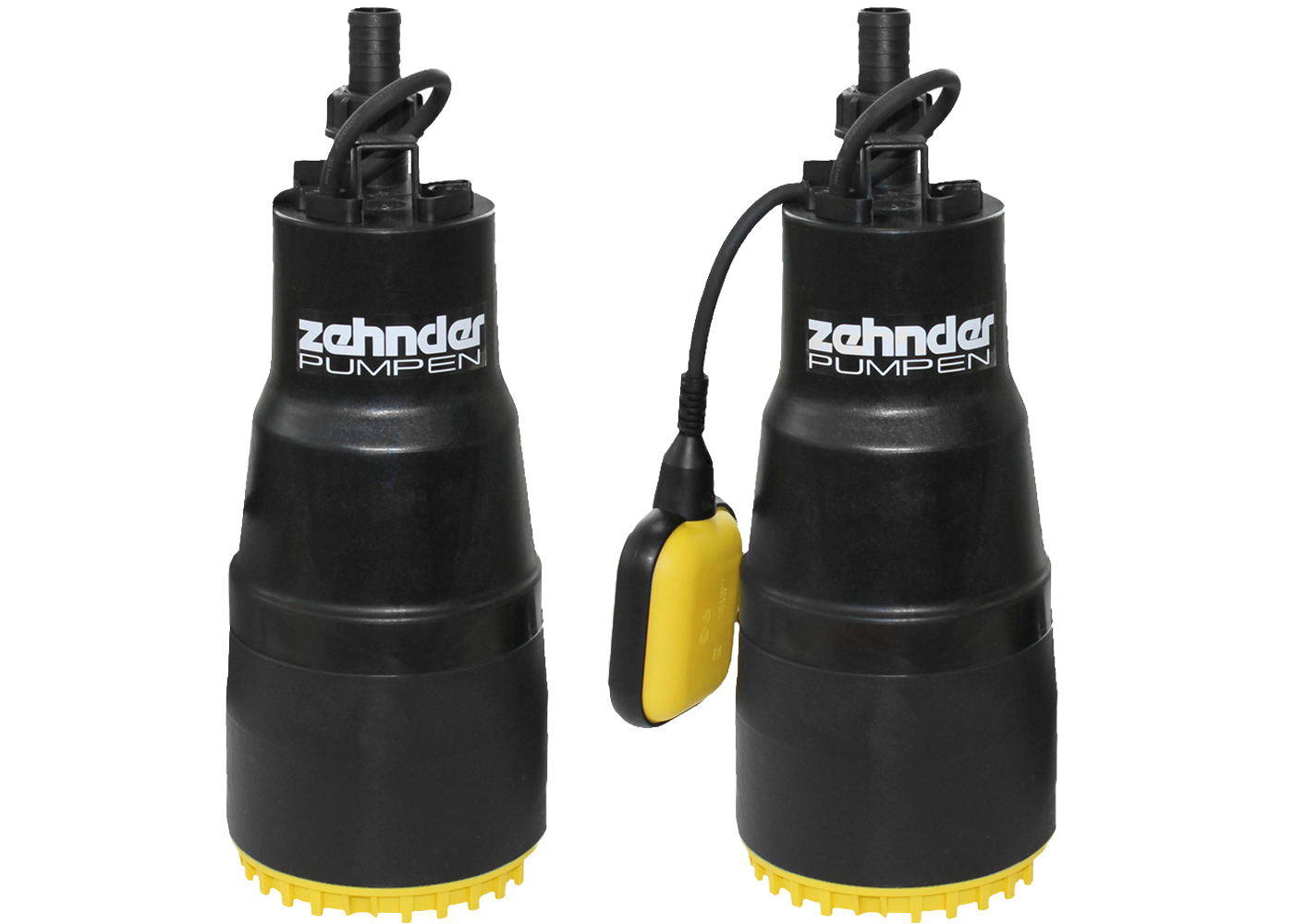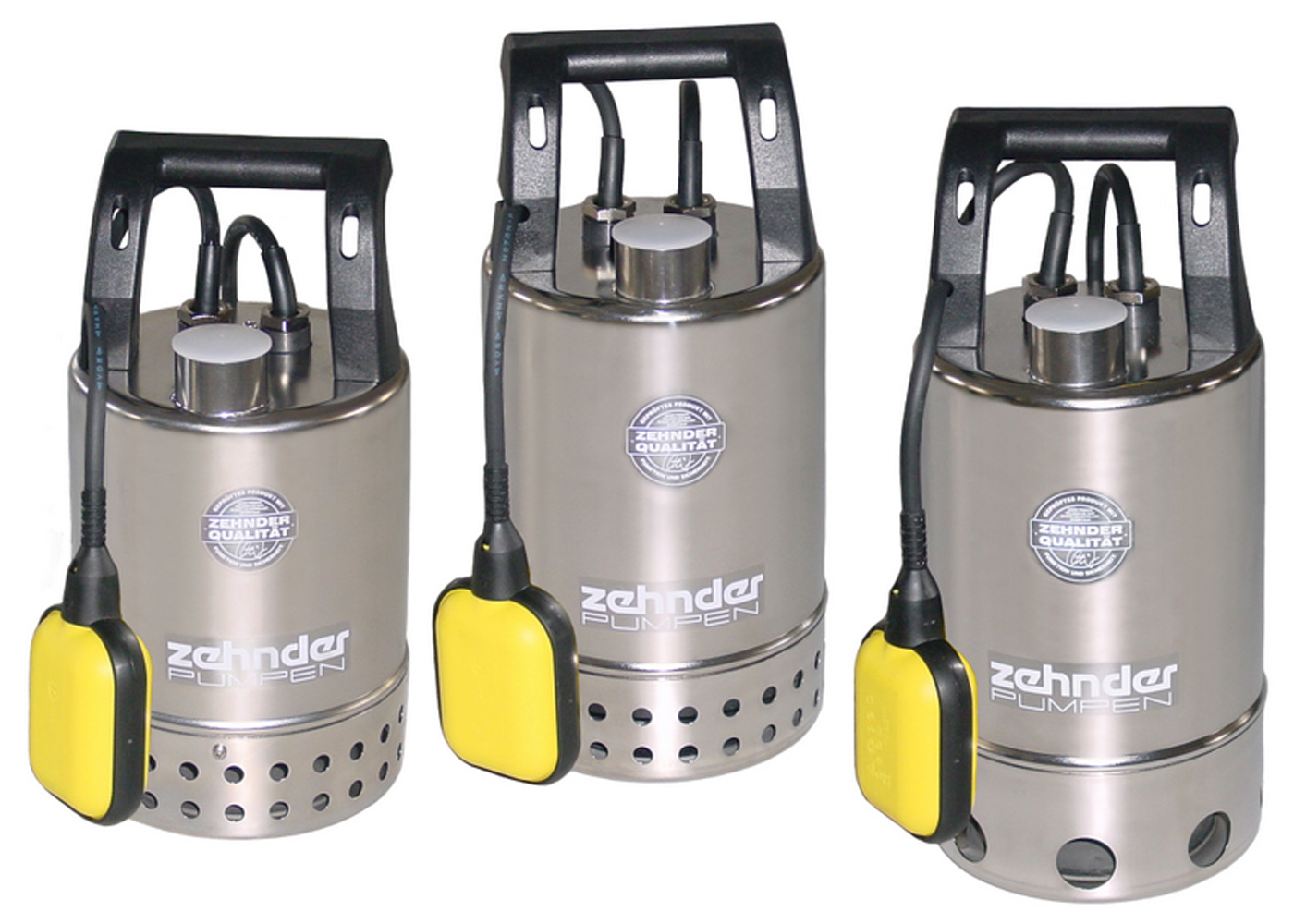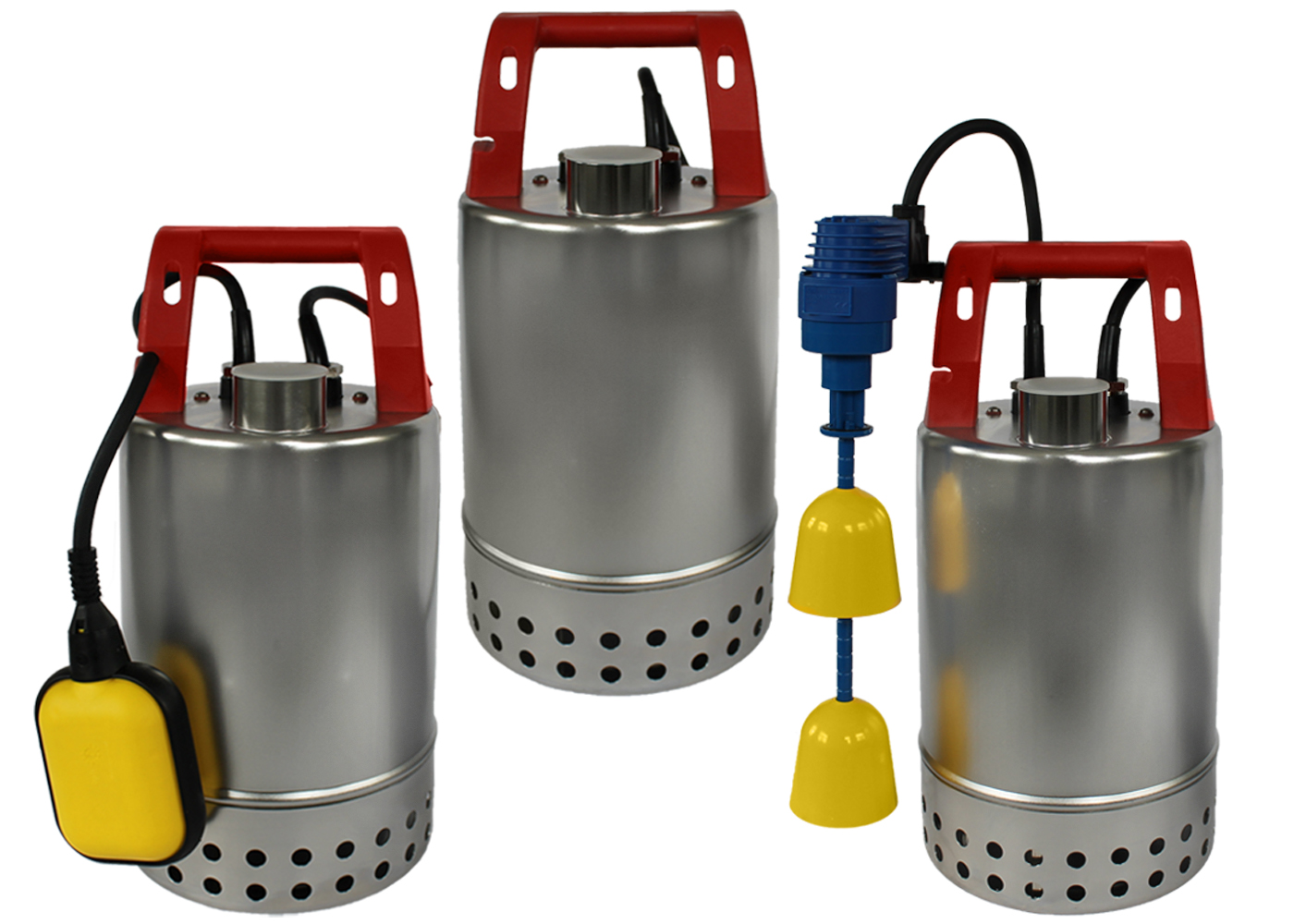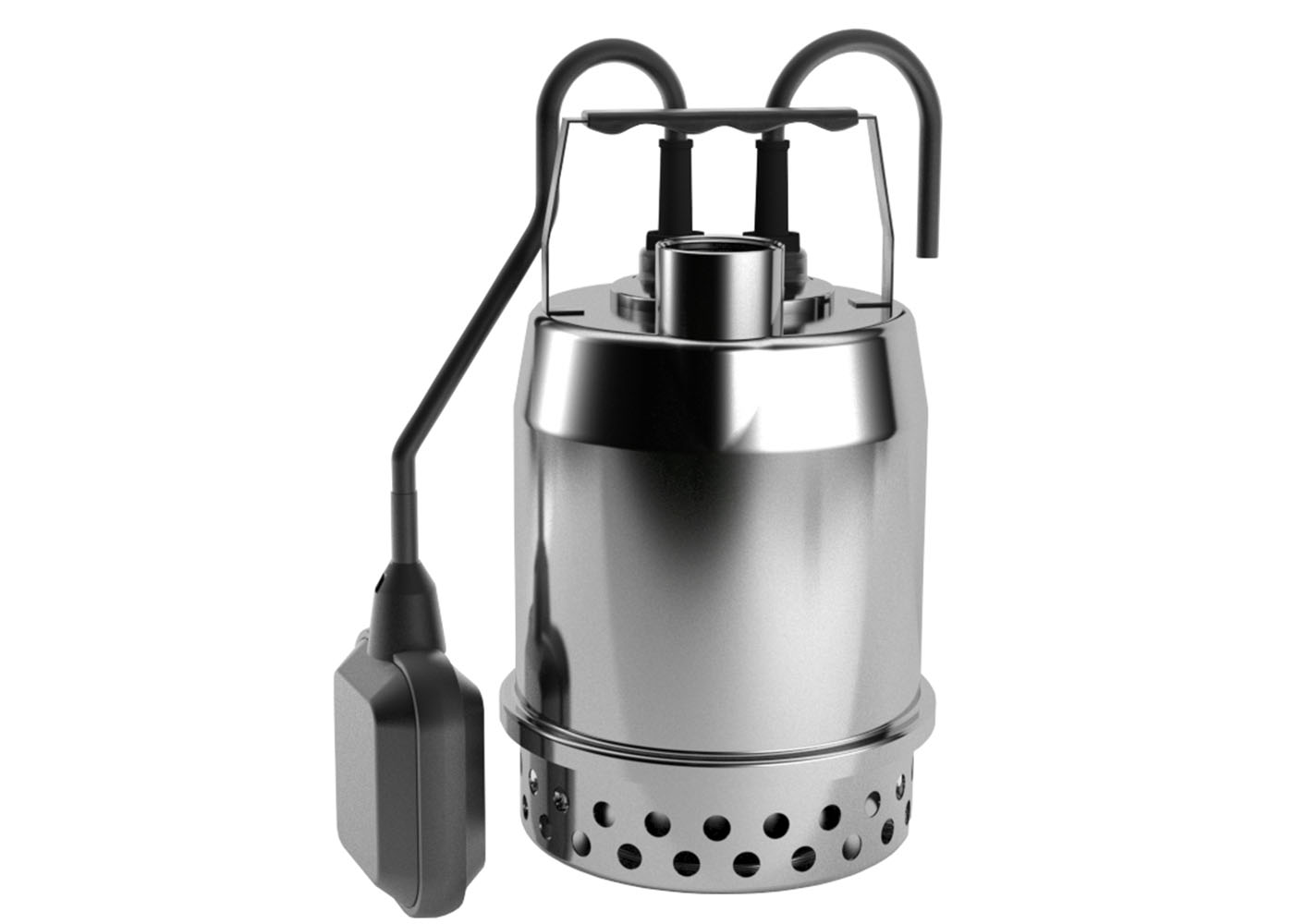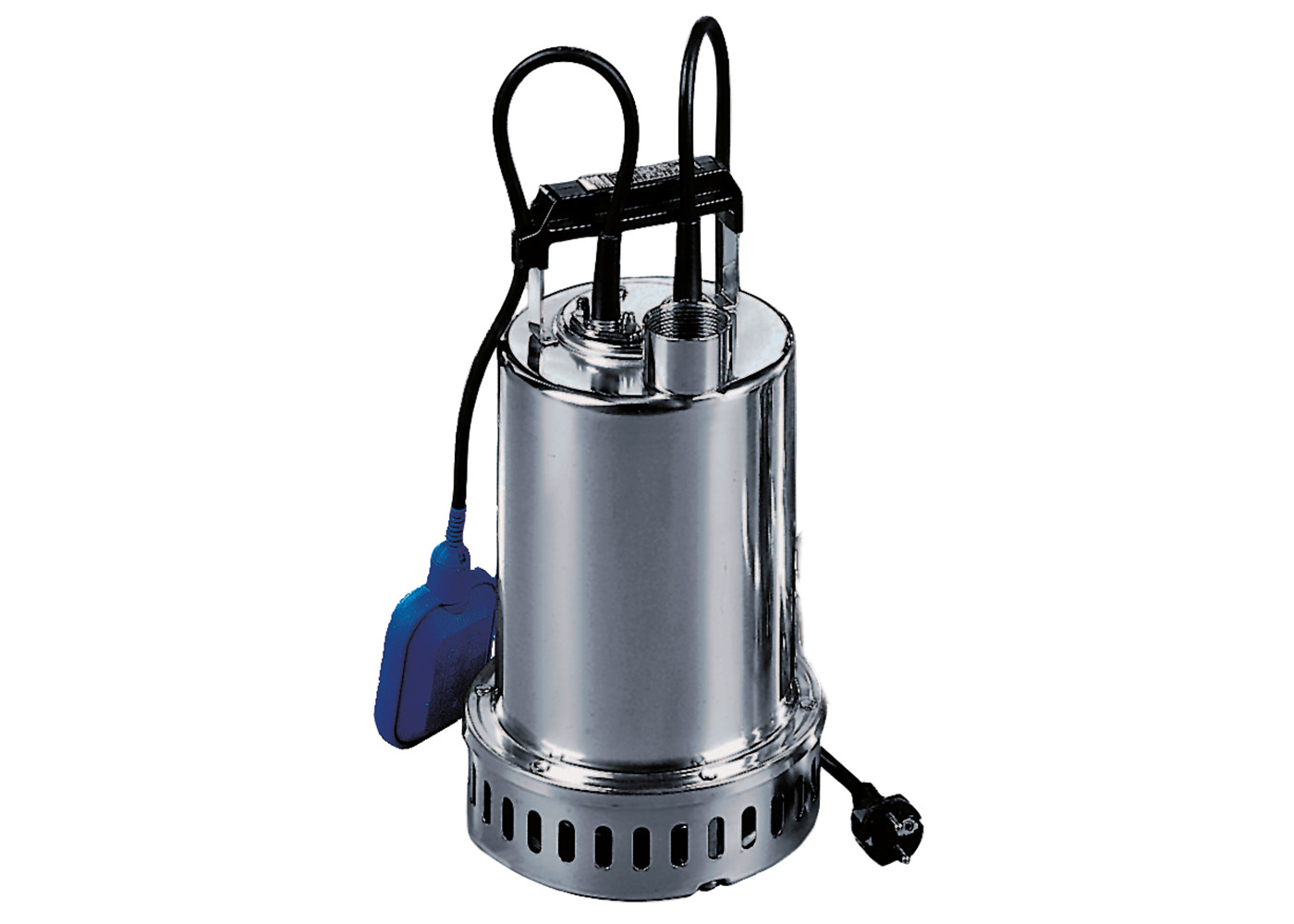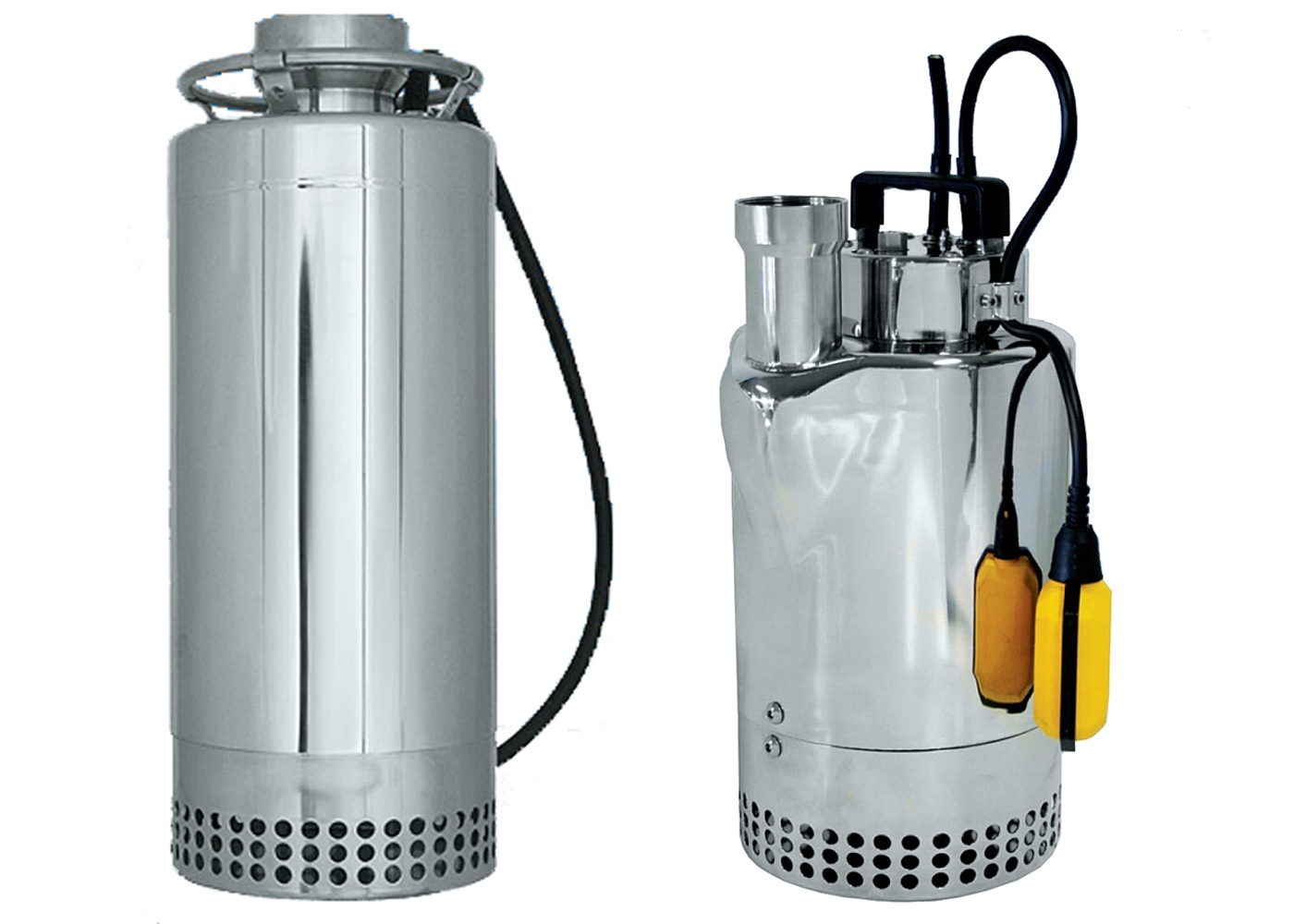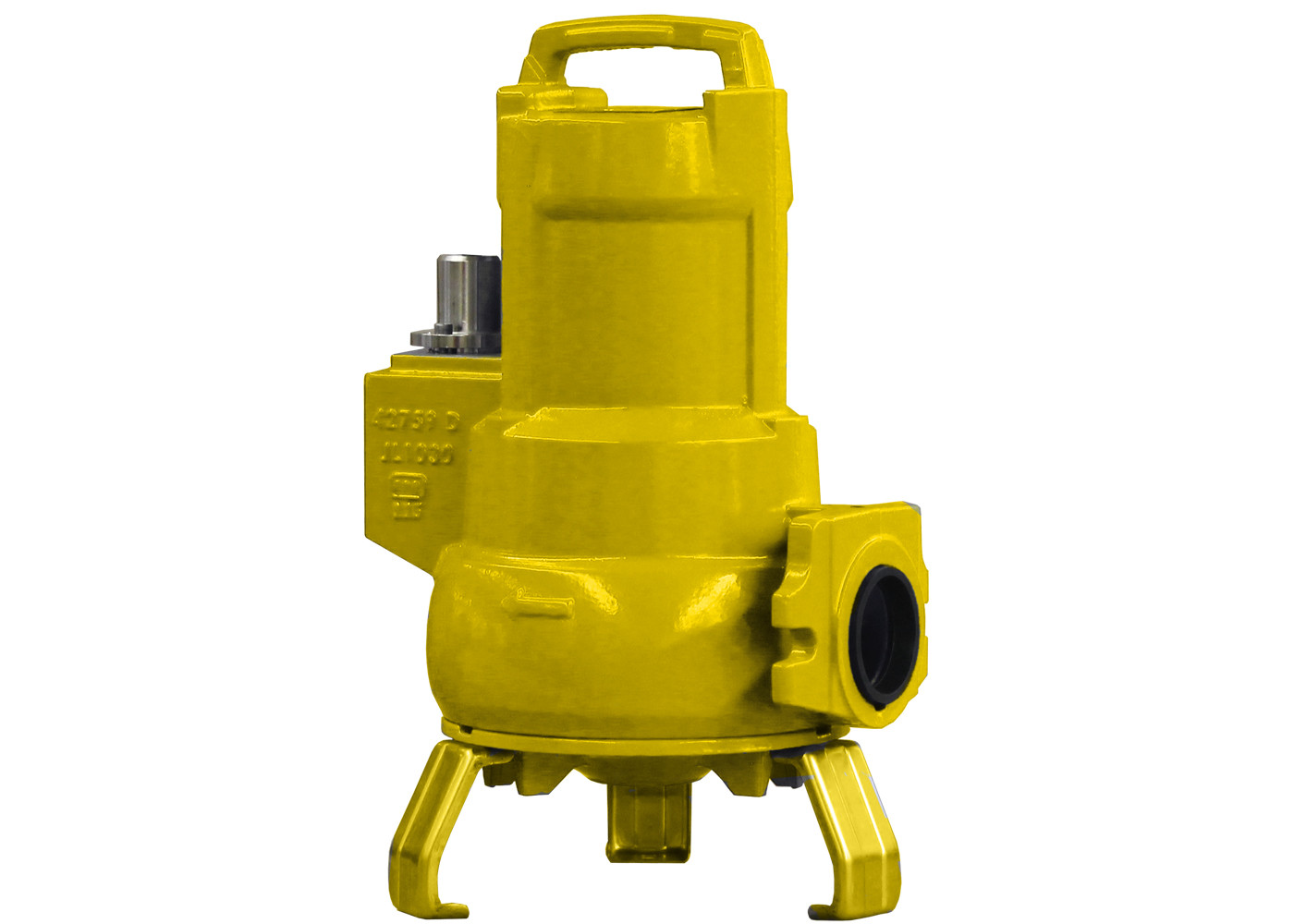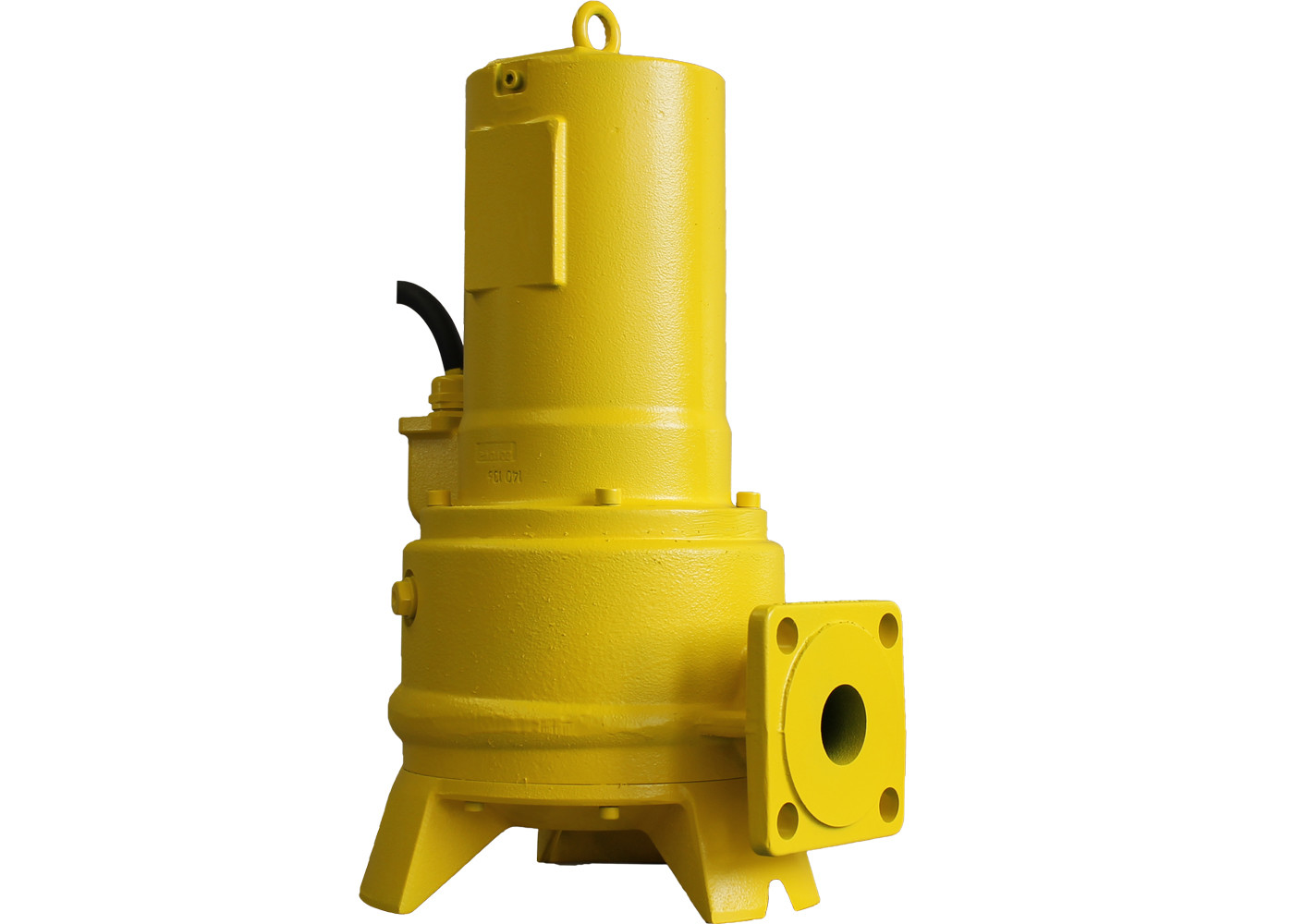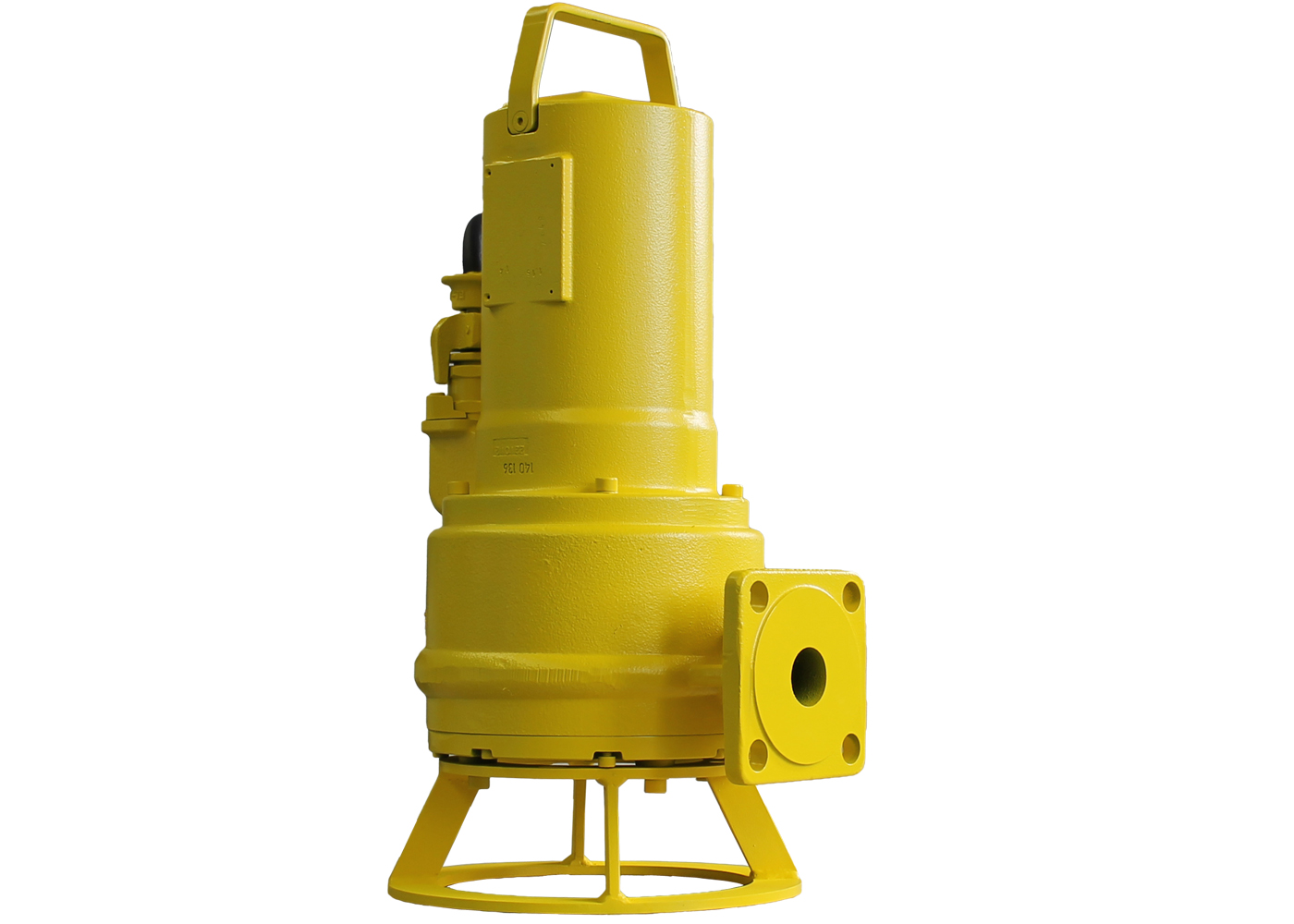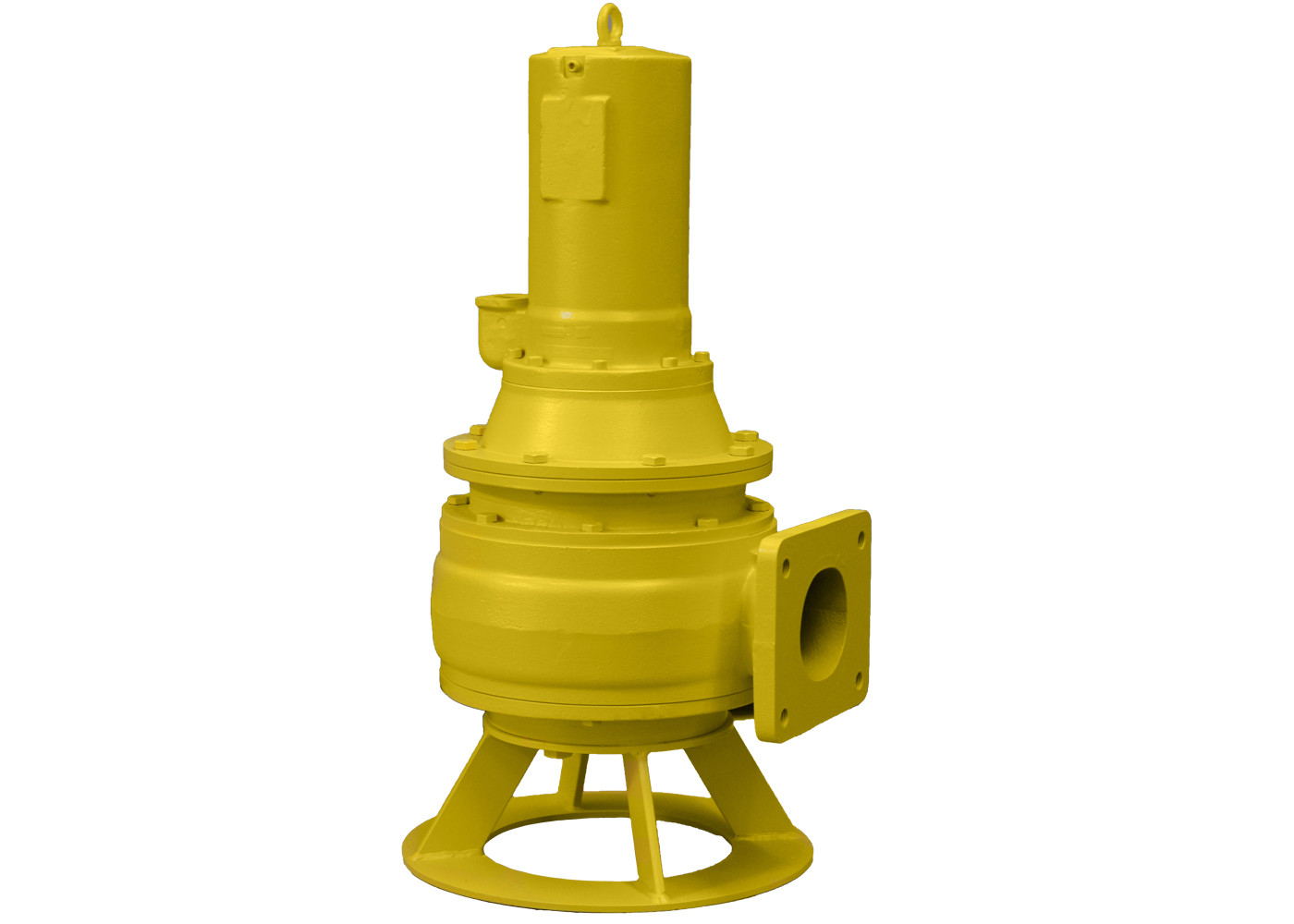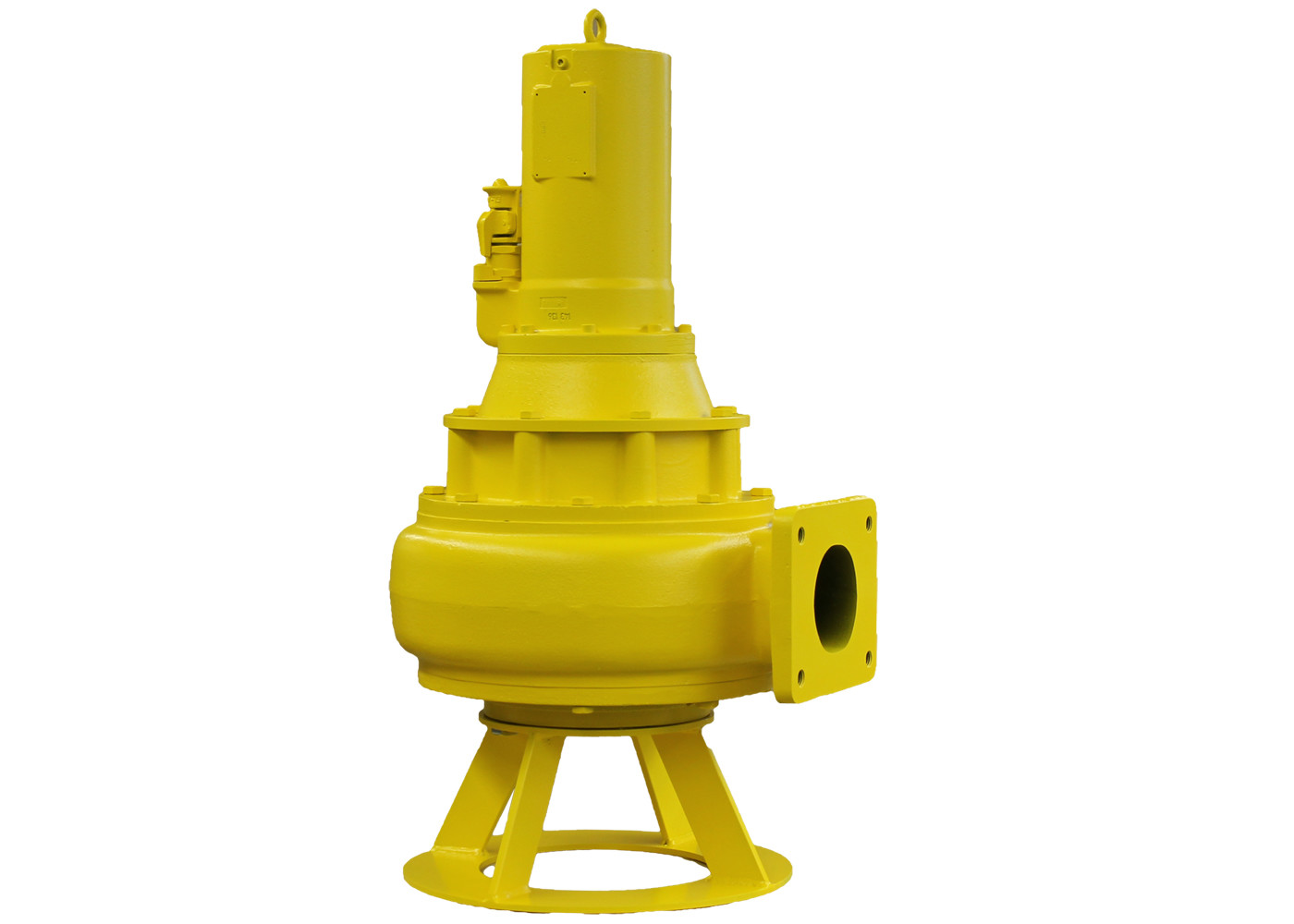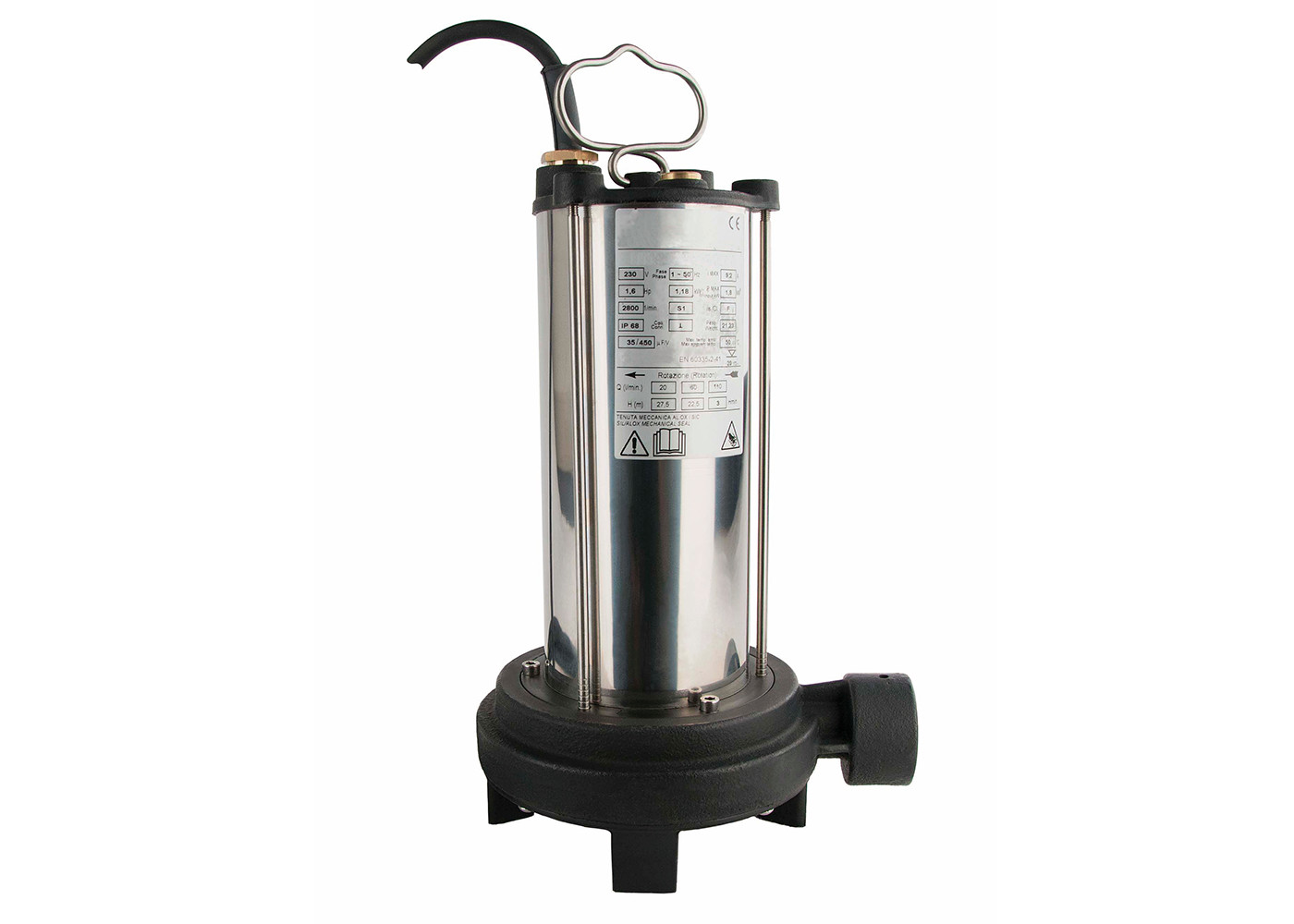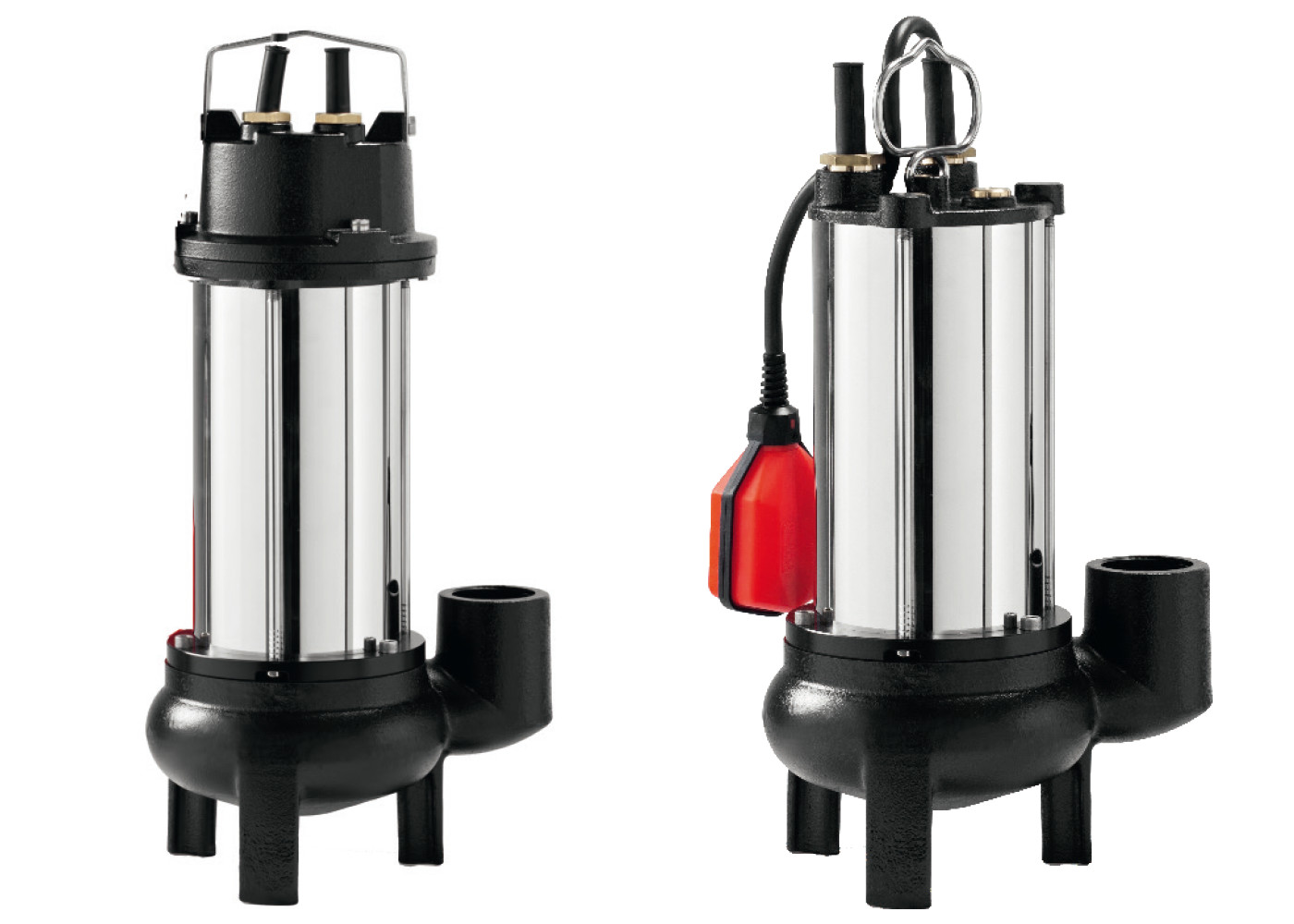Submersible pumps
Compared to normal or self-priming pumps, a submersible pump works completely immersed in the pumping liquid. It has a special intake grille on the lower side, which draws in the respective liquid directly. A discharge hose or pipe is fitted to the discharge connection, i.e. the outlet of the pump, in order to pump out the pumping liquid.
Types of submersible pumps
There are different types of submersible pumps depending on the intended use. Which model should be used depends on the type of liquid to be pumped (clear water, waste water or sewage), the required capacity and the type of installation. Submersible sewage pumps convey black water with faecal solids. They are available with or without a cutting unit. Submersible grey water pumps, on the other hand, pump clear water and water with light impurities or solids. In pumps with vortex impellers, solids are pumped through the pump hydraulics by means of a sufficiently large, free passage. The maximum size of the solids is also referred to as the particle size. Cutter pumps, on the other hand, shred the solids they contain before the hydraulic system and thus also ensure blockage-free operation. The special types of submersible pumps include shallow suction pumps, pressure pumps, borehole pumps and construction pumps. Shallow suction pumps are used for the emergency drainage of basements, wash houses or shafts, for example, if the water needs to be pumped out almost completely. Shallow-suction submersible pumps can also be used when water needs to be pumped out from a very low level. Pressure pumps are capable of pumping slightly contaminated waste water. They are suitable for garden irrigation. Deep well pumps, on the other hand, are used to pump water from wells or greater depths. Construction pumps can also pump coarse sludge, stones or other pumped media with a high volume. Submersible pumps are differentiated according to the materials used. There are stainless steel submersible pumps, plastic submersible pumps and submersible pumps made of cast iron.
Use of submersible pumps
As different as the individual submersible pumps are, so are the areas of application. Submersible pumps pump rainwater, water from wells, cisterns or rain barrels, among other sources. They are used for garden irrigation or sprinkling and drain construction pits. In addition, submersible pumps are used as drainage pumps to convey domestic waste water into the sewage system. However, submersible pumps are also used for emergency drainage, such as pumping out cellars in the event of flooding. Like all pumps, submersible pumps are differentiated by their delivery data (flow head and rate). Particularly powerful pumps are operated with alternating current (400 V). Almost all submersible pumps for the domestic garden are operated with alternating current (230 V). The pump is connected using a hose or fixed pipework. Most submersible pumps are controlled automatically by means of a float switch. This automatically switches the pump on and off again when the water reaches a certain level. A very precise type of control can also be achieved by means of an electronic level control using electrode control. This is mainly used for shallow suction pumps. Submersible sewage pumps are mainly controlled by pneumatic level control using the dynamic pressure method.
Request submersible pumps made in Germany
Zehnder Pumpen offers various types of submersible pumps for your specific application. We supply these to you as ready-to-use packages, which include the accessories. Our ready-to-install submersible pumps can be installed quickly and, due to their high-quality workmanship, will continue to be ready for use even many years later. Do you have any questions about our products? Please get in touch with us, our staff will be happy to advise you.

